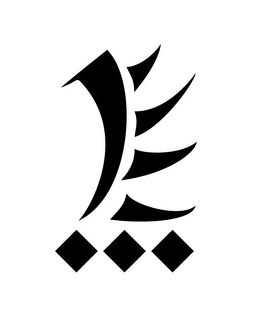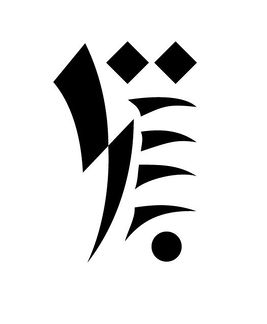Realm
Overview
The world of Empire is known to touch six other planes of existence that are separate from, but intimately connected to, the mortal realm. These realms are innately connected to the practice of magic, as well as being home to eternals, heralds and more.
Magicians have named four of the realms after the four seasons, but these are symbolic rather than literal names. The realm of Winter, for example, incorporates brutal desert, parched forests and bottomless oceans as well as frozen snowfields. The "seasonal realms" resonate more with the "seasons of life" than the literal wheel of the seasons. Spring is wild and unfettered as a child, Summer is full of the arrogance of youth, Autumn is a realm of maturity, and Winter a realm echoing with the fear and wisdom of old age. By contrast, Day and Night are realms of the spirit; one encompasses ideas of intellect and the higher mind, the other ideas of passion and the primal instincts.
A place where the power of one or more of the realms has seeped into the mortal world is called a regio. They are important for magic; a powerful regio can make it easier to cast some rituals and the most powerful rituals can only be performed in an appropriate regio. The more powerful a regio, the stronger the connection with the realm and the more likely that the area will show physical and spiritual signs of the realm's pervasive influence. A powerful regio will usually be associated with a chamber, a location half-way between the mortal world and the realm.
The realms are home to many supernatural beings. The most powerful are the eternals the defacto rulers of each realm, but they also contain countless other entities as well.
A system of six sigils are commonly used in the Empire to represent the realms. These sigils were created and popularised in pre-Imperial times by a Dawnish enchanter, initially for use in heraldry. They were later adopted by several prominent weaver cabals for the creation of magic banners, tabards and cloaks and their use slowly spread, especially in Varushka, the League and Highguard. Today they are regularly used in ritual magic as symbols of entire realms where individual Wintermark runes would be too specific or too laden with additional meaning. Many eternals recognise these glyphs, and honour their association.
Unreachable By Mortals
- Mortal beings cannot reach the realms and return
- Mortals who claim to have visited a realm have been in a chamber
No mortal has ever visited one of the six realms and returned. Whatever limits there are that prevent an eternal from entering the mortal world, also serve to prevent a mortal from entering a realm. A handful of mortals have been able to reach a realm. Doing so is fatal unless an eternal strips them of their mortality and transforms them into a herald - at which point they are no longer human or orc in any appreciable way. It is not possible for a player-character to visit a realm.
Mortals who claim to have visited a realm have in fact visited a chamber - a place that exists part way between the mundane world and the realm. Some of these chambers are very large - one might contain an entire forest for example. Meetings between inhabitants of a realm and mortals are relatively common in such places. All the legendary encounters between eternals and mortals in history took place in chambers.
Over the centuries, the magicians of the Empire have built up a picture of these other worlds from observations of the magical chambers associated with each realm and through discussions with eternals and their heralds.
Spring
Sometimes called the Primal Forest, this is a realm of plant life, first and foremost. There are living creatures in abundance, insects and reptiles proliferate but animals of every kind dwell here. Despite this there is an overwhelming sense that this realm belongs to the plants, that everything else is simply tolerated. Plants and plant-like things of all natures, including ferns and fungus, explode in all directions, often growing to vast sizes. Any type of terrain that can support vegetation can be found here, and there are plenty of rivers, lakes and even shallow seas choked with marine plant life. There are hills and mountains covered in forests of tall pines. These forests spread over much of the realm, but they are populated with clearings and in a few places the trees reluctantly retreat leaving perpetual meadows filled with grass and wild flowers.
Storms are commonplace throughout the realm, with winds so powerful they uproot trees. When the storms are not blowing, the sun is bright and the sky a brilliant blue, although the realm is always cool and damp, a testament to the frequent rain.
Dead things become alive here – not in the sense of reanimation or reincarnation, but in the sense of being claimed by the realm. A dead body will begin to sprout fungus or tiny plants within a matter of hours and be entirely dissolved by sunset or sunrise, leaving only a few bones among the new plants. Likewise unattended objects, especially organic objects, are quickly consumed. Everything rots, rusts, and decays and in doing so serves as the basis for new life. Structures are virtually unknown unless they are formed from living plants. Dead wooden structures quickly collapse and become overgrown, while stone buildings are rapidly reduced to ruins by questing roots and vines.
The resonances and dissonances of Spring magic can be found here.
Spring Eternals
| Eternal of Spring | Concerns |
|---|---|
| Arhallogen, the Spider King | Survival, adaptation, poison, arachnids |
| Irra Harah, Guard of the Young | Youth, struggle, the weak |
| Llofir, the Quiet One | Fungus, rot, decay, collapse |
| Ossegrahn, the Cupbearer | Healing, life, fresh water |
| Siakha, the Empress of Sharks | Storms, destruction, predation, the sea |
| Yaw'nagrah, the Green Mother | Fertility, diversity |
The eternals of Spring are wild creatures, most of whom are either disinterested in civilisation or in the Empire as a political entity, or regard it as their enemy in some way. A being like Siakha is happy to help anyone who wants to make the world more savage and bloodthirsty and filled with destruction, but that usually makes them the enemy of the Empire and indeed anyone who enjoys the trappings of civilisation. Order and hierarchy are anathema to the Spring realm, and few of the eternals have any interest in aiding those who seek to bring order to the world. Yaw'nagrah seeks endless growth and eternal change, and the green madness that tears apart farms and cities with equal fervour. Arhallogen teaches the strong to prey on the weak, and offers cruel weapons that bring swift death to anyone prepared to accept them.
This isn't to say they are all inimical to Imperial citizens; Spring has a more gentle side as well. Ossegrahn promotes healing of body and mind. Llofir is not a creature of mindless destruction, but of the cycles of creation and destruction that see the old give way to the new. Irra Harah is fiercely protective of the young and those ground under the heel of tyrants. The problem is that even the most gentle of the Spring eternals is still a creature of the wild, that at best has no use for the trappings of the modern world and at worst sees them as obstacles that must be torn down.
Summer
The realm echoes every part of the material world, but exaggerated and amplified in every way. In the realm of might and majesty, everything exists in a timeless moment at its idealised prime. Great oaks tower over the fields of glory, the mountains scrape the skies, the blizzards howl more terrible than any mortal storm and the dark seas are deeper than any mortal ocean. The savage beasts of legend are hunted across the rolling plains by eternals clad in the bright panoply of youth and immortality.
The realm has creatures that are like animals, but they often possess a magical nature. There are no small animals here – majestic stags, immense eagles, mighty lions, fearsome dragons, awe-inspiring unicorns and leviathan sea creatures are more common. These creatures exist to challenge and provide sport to the inhabitants rather than as creatures atop complex ecosystems.
More than perhaps any other, this is a realm that reflects the whims of the eternals who rule here. Where it is wild, it is wild because they want it to be or let it be. There are no real settlements here as mortals understand them – an eternal may have a castle, or a lodge, or a palace, but there are no fields to be tilled or flocks or herds to be tended. They may have great feasts every night, but there is no suggestion that those feasts are needed to provide sustenance – they are events intended to thrill and entertain rather than sate one's hunger.
Eternals and heralds alike are clad in fine raiment as befits their station. Each item is unique in some way, if an eternal chooses to make something, it is a unique crafted piece and more than likely a powerful artefact, not just another sword. Things are elegant but simple, straightforwardness is a subtle but constant element. This is a realm of bows, not crossbows. It’s a realm of torches rather than lamps. Its not a realm where machines or complex devices have a place.
The resonances and dissonances of Summer magic can be found here.
Summer Eternals
| Eternal of Summer | Concerns |
|---|---|
| Eleonaris, Queen of the Fields of Glory | Majesty, nobility, battle, victory |
| Jaheris, the Shadowed Prince | Rivalry, betrayal, vengeance |
| Hayaak, the Gryphon King | Wrath, vengeance, ferocity |
| Cathan Canae, Queen of Ice and Darkness | Might, winter, strength, durability |
| Barien, the Iron Duke | Challenges, worth, tests |
| Meraud, the Golden Magician | Magic, enchantment |
| Rhianos, Regent of the Eternal Sea | The sea, seafarers, adventure |
| Adamant, King of the Golden Deeps | Stone, beauty, treasure, construction |
The kings and queens of the Summer realm rule over vast demesnes where they spend their time hunting, fighting and feasting. They are rivals to one another, and while they might make alliances from time to time, they rarely last long. The enmity between Eleonaris and Cathan Canae, two great Queens who contend ceaselessly for land and prestige, is perhaps the best known of these rivalries, and at any given time there are at least one or two other eternals caught up in their endless conflict. Only Barien, the Lord of the Crossroads, seems to avoid the chaos at the heart of the realm, serving as an "elder statesman" whose wisdom and experience are valued by all the many kings and queens of this realm.
Each Summer eternal is a proud and majestic being, and most of them have tempers to match. The self-righteous fury of the summer eternals is legendary, but it will pass if suitably propitiated. And like a storm, if the offending magician can find a suitable way to make amends then it is usually as if it never happened. Those who seek audience with the summer eternals are well-advised to watch their language carefully - all the eternals of Summer style themselves as monarchs or their equals and expect to be treated accordingly. They dislike base flattery, but only when they identify it as such - a magician who offers due respect is likely to prosper.
Autumn
In the realm of intrigue and influence, everything interweaves in a great shifting web of favour and debt. The horned lords and ladies compete in savage games of wealth and power. They welcome mortals to their councils but beware the bargains of Autumn for, in the Iron Labyrinth, nothing is simple.
The Iron Labyrinth is a bleak landscape painted in crimson, black, and gold. It is a mountainous realm, but it is also a literal labyrinth – the landscape is a massive maze carved out of the ground itself. Sometimes the walls are black, white, or crimson stone, sometimes they are iron or lead, sometimes they are impenetrable thorny thickets or the high walls of natural canyons. Sometimes they are narrow passages where travellers must walk in single file, sometimes they are immense avenues wide enough for an army to march freely down. Sometimes they open into great plazas or clearings large enough to hold a city. Everything here is a little past its prime, however. Metallic ivy spreads across the walls, old structures crumble a little, and vegetation is almost unknown – what plants do exist are usually made of metal or crystal.
Water runs through the Labyrinth, a complex series of canals and locks that feed into a great lake or sea that connects the cities of the realm. It is often raining here, powerful winds are common, and occasional floods or earthquakes are not unknown. While there are regular days and nights and a sun and a moon, there are no seasons. As near as scholars can tell, everything is in the late season of its life. The metal and stone trees resemble the deciduous trees of the mortal world in their autumn finery, the fields (such as they are) are always full of crops ready to be harvested, the orchards and vines are always heavy with peculiar fruit. In theory nobody goes without sustenance in the realm of Autumn, because it is a realm of plenty and yet many of the inhabitants perpetually have a hungry look in their eyes.
The Iron Labyrinth contains only cities – there are no towns, villages, or hamlets in the Autumn realm. The inhabitants of these great conurbations cluster together in chaotic, sprawling buildings that link one to the next without pause or thought. Each metropolis is ruled by a single sovereign or prince, a powerful eternal whose nature dominates the city and everyone who lives there and from whom all political power descends.
The realm descends deep beneath the surface as well – beneath the mountains are great delves and mines that criss-cross and interconnect. The passages beneath the surface are dangerous, inhabited by strange creatures and deadly traps, but they create a second labyrinth that forms a dark mirror of the surface world and is a source both of astounding mineral wealth and of clandestine movements.
The resonances and dissonances of Autumn magic can be found here.
Autumn Eternals
| Eternal of Autumn | Concerns |
|---|---|
| Basileia, Prince of the Black Vaults | Intrigue, espionage, power |
| Callidus, Prince of the Argent Tontine | Greed, avarice, desire |
| Ephisis, the Hidden Prince | Trade, commerce and investment, value |
| Estavus, the Forgemistress | Crafting, building, artisans |
| The Lictors, the Chainbound | Binding, imprisonment, punishment, contracts |
| Mazen of the Many Faces (destroyed) | |
| Prospero, Lord of the Loom | Influence, favours, grudges |
The Autumn realm, is a land of cities, each of which is ruled by a single eternal, a sovereign or prince from whom all political power descends. Some say the city itself is the eternal, and those who dwell there are simply manifestations of the city's identity. In any case, all these conurbations are a hotbed of competition and rivalry, with factions of heralds vying to outdo each other at every turn. All of this seems to be actively encouraged by those who rule over these domains and mortals who approach them would do well to remember that. The rules of the Autumn realm reward ambition and encourage those who seek to get ahead.
More than any other realm, the occupants of the Autumn realm are highly transactional. Relations may be cordial or frosty based on past form, but there is little in the way of friendship here. Rather each eternal is interested in what will advance their interests - and what will profit those who deal with them. They are candid about seeking their own advantage and comfortable with those who are self-aware and confident enough to reciprocate.
It is wise to be careful when dealing with the eternals of the Autumn realm. While they don't embody the savage fury of the Spring realm, the hot rage of Summer, or the cold hatred of Winter, they remember those who have crossed them and look to ensure that every debt is repaid in full, with interest.
Winter
The Wasteland is hungry. It is a realm of creaking dread, of fear and famine without the memory of dusk or the hope of dawn. From the parching heat of the dusty desert halls, past wastelands of bleak stone and abrasive sand, and tundra decorated with razor ice to the frigid silence of snow-drowned forests,. Ruins litter the landscape like fallen leaves, suggesting that there were once cities and towns here, but if that were true, none now remember their names. There are at least two ruined cities in the realm, one of them standing on the shores of a tideless black sea that is inexorably drowning the buildings that remain.
In some ways it is almost as if the realm itself is on the verge of death. The length of day and night is not set – a day might last a few hours and a night last for what seems like a week. Sometimes the sun fails to rise for months on end, and when it does put in an appearance it is a baleful red orb that hangs low in the sky. At night the moon is wan and sallow, and provides minimal illumination. It’s dangerous to carry lights in this hungry night, however, for light and warmth attract the denizens of the realm.
What weather there is here is poor. Blizzards and bone-chilling cold are obvious, but it is also a realm of drought, where drinkable water is as scarce as wholesome food. The occupants of the realms do need to eat or drink to survive, and yet every inhabitant of the Winter realm is plagued by hunger and thirst that gnaws at their senses and can never be sated.
There are said to be oases in the wilderness of Winter but these are dangerous places. The eternals of Winter are monsters who make little effort to conceal their cruel natures. Their homes may sometimes appear well-lit and replete with food and warmth, but their owners demand a steep price from their guests, and maintain esoteric bans that can easily be broken by visitors who don’t know the rules. It is a realm of wisdom, but it is the cruel wisdom that comes with age and experience, the wisdom of hard choices and the certainty of death.
The resonances and dissonances of Winter magic can be found here.
Winter Eternals
| Eternal of Winter | Concerns |
|---|---|
| Agramant, the Hunter in the Wastes | Hunger, cannibalism, madness, dread |
| Kaela, the Lady of Oblivion | Entropy, despair, endings |
| Sorin, the Tomb King | Privation, strength from weakness |
| The Thrice-cursed Court, the Bound | Curses, power at a price, spite |
| Wise Rangara, the Ancient One | Wisdom, tradition, |
The eternals of Winter are often regarded as monsters, and of them all Agramant seems to take the greatest delight in filling that role. They are uniformly cruel, their nature unforgiving. The Thrice-cursed Court spread malice, jealousy, spite, and hate in their wake, while Sorin ensures that the price paid for his boons is always just a little more painful than the bargainer expects. Even Wise Rangara, arguably the most sympathetic of them, lacks any real empathy. She won't hesitate to demand a child remove their own eye in exchange for a boon, reflecting the way that wisdom always comes with a price in the Winter realm.
Perhaps their saving grace is the fact that they don't hide their natures. They never really pretend to be anything other than they are, and make no bones about the fact that they are creatures that should be feared. As with all eternals they are creatures of their realm, sharing in the resonances that manifest in Winter magic, and as such they are not solely cruel nor do they consider themselves to be wicked. Kaela, for example, understands that an ending can be a mercy, while for all her harshness Wise Rangara genuinely attempts to teach lessons of wisdom and responsibility to those she deals with. Many of them offer boons of protection, warding, and perseverance alongside their darker gifts, and even Agramant never forces people to take his monstrous boons - knowing their their own greed, weakness of character, or ambition will be more than enough to deliver the foolish into his clutches.
Day
A realm of spirit and of shining light, a realm of Sea and Sky. Where the sky and the ocean meet, in the heights and the depths, the eternals of Day seek infinite understanding of the truths of creation. It is a realm that celebrates reason over impulse, thought over instinct, harmony over passion. It is the realm of the higher mind, of the birth of revelation and the death of secrets.
That air itself glows with a golden radiance that seems to cover from all directions, despite the empty sky. In place of a golden sun there is only a limitless vault that becomes brighter and brighter as one looks upwards until the glow is too bright to look upon. The clouds are shimmering fields of silver and gold that drift lazily around in proscribed orbits, never diminishing or increasing in size. The realm itself is a vast ocean of clear water that becomes darker and darker blue as the depth increases. Several miles beneath the surface are structures or creatures that glow with their own light, and to an observer on the surface it might appear that the depths of the ocean are full of stars.
The realm is scattered with a multitude of islands, a swirling archipelago that never ends. The smallest are a few dozen metres from one shore to the other, the largest approach the size of an Imperial territory. These islands do not exist just on the surface of the water, however. Great blocks of stone and coral hang impossibly in the air, or are drowned deep in the ocean. The inhabitants of the realm move between them with great facility – but the further from the surface an island is, the more important and powerful the beings who dwell there.
Because the air itself glows there are no shadows here. The water of the ocean is so clear that it is many many fathoms before this glow becomes hazy, and due to a peculiar property of the realm the ability to perceive is never impeded. Even in the deepest and darkest abyss, where the light from the sky has faded almost to nothing, creatures can see and hear as if stood on the surface. Such abysses are rare; the depths of the endless ocean are replete with plants that create their own illumination, shimmering crystalline coral, and creatures that radiate all the colours of the rainbow.
Some pre-Imperial mystics claimed that if one were to go down far enough into the ocean, to the point where the very last of the light is gone, one could travel directly to the highest parts of the realm of Night. This is one of the beliefs of those who teach that the realm of Day and the realm of Night are the same realm, rather than two different realms. Eternals of Day and Night both find the idea unbelievably foolish.
The resonances and dissonances of Day magic can be found here.
Day Eternals
| Eternal of Day | Concerns |
|---|---|
| Cold Sun | Order, perfection, purity |
| Kimus of the Thousand Eyes | Light, scrying, observation |
| Leviathan, the Deepest One | History, foundations, causation |
| Phaleron, the Great Library | Knowledge, preservation |
| Roshanwe, the Navigator | Discovery, wisdom, truth |
| Sinokenon, the Turning Mirror | Hierarchy, connections, religion |
| Ylenwe, the Dove | Harmony, mathematics, music |
| Zakalwe, the Strategist | Conflict, logistics, strategy |
The eternals of the Day realm are almost uniformly interested in knowledge and precision, discipline and structure. They are slow to anger and rarely allow their emotions to rule their reason. They prize clarity of thought and clear expression and expect those who commune with them to speak their mind. One of the few ways to annoy a day eternal is to waste their time, whether that is by engaging in small talk, tomfoolery or just a lack of discipline and clarity if your approach.
They generally dislike chaos and disorder, and those who spread it. They are rarely transactional, the best way to persuade a day eternal to aid you is usually with compelling logic and a convincing case rather than offers of incentives or payments. They are much more concerned, however, with procedures and principles than other eternals - recent boons from several of these eternals have specifically required the Imperial Conclave to accept and determine the parameters of those boons. They are more likely than eternals of other realms to want to deliver their boons via the established Imperial houses of power rather than with individual magicians.
Night
A realm of spirit and of eternal shadow, a realm of endless ancient forest where passion rules, thought gives way to instinct, and joy and terror are both a breath away. The coiling serpents and enigmatic wyrms of Night whisper of the joy of mysteries, and of the riddles whose beauty lies in the act of unravelling rather than the revelation of the secrets wrapped within.
The realm of Night is, unsurprisingly, dark. The sky is always black, but it is peppered with tiny winking stars. There is usually no moon here, but there are often dim sources of illumination that serve to create oases of safety – or danger – in the general darkness. Firepits, lanterns and torches are common elements here, often serving as the centre of a small settlement or the site for a few hours of revel or battle.
The realm of Night has weather – hot and sultry or cold and bitter. It might rain, or there might be a dense fog. Weather conditions tend to suggest the presence of an eternal or other powerful entity in the vicinity – the weather, like the realm itself, is subject to the will of those who rule here.
Much of the realm exists beneath the ground – there are caverns the size of countries in which forests and cities exist, as well as winding mazes that dip through three dimensions in their complexity. The underground realm is as fecund and magical as the aboveground realm – where there is no soil, the rock itself gives forth life in the shape of multicoloured mushrooms and luminous mosses.
The surface is wild, and unconstrained. Much of it is covered in dark forest – and folk tales say that this forest connects in places directly to the darkest and wildest parts of the mortal world and one who has abandoned rationality (drunks and distraught lovers) can wander across the boundaries into the realm of Night if they are not careful.
The resonances and dissonances of Night magic can be found here.
Night Eternals
| Eternal of Night | Concerns |
|---|---|
| The Azoth, the Crucible | Transformation, alchemy, enlightenment, change |
| Janon, the Shadowed Fire | Passion, freedom |
| Lashonar, the Loquacious | Stories, confusion, speech that moves, oratory |
| Sadogua, Brother of Wizards | Magicians, magic, power, manipulation |
| Sung, the Rainbow Serpent | Mysteries and enigmas |
| The Whisper Gallery, the Shadow Courtiers | Secrets, rumour, art |
The eternals of the Night realm are divided into serpents and wyrms. The serpents - Azoth, Sung, and (allegedly) the Whisper Gallery - have wings and no limbs and are ephemeral and cerebral in nature. The wyrms - Lashonar, Sadogua and Janon - have limbs but no wings and are more grounded and earthy in nature. All the Night eternals enjoy clever wordplay, elegant language, and a degree of flattery, though for the most part it is elocution and the sophistication of language that they enjoy rather than crude words of admiration or praise.
Night eternals are mercurial by nature and their moods are volatile and sensitive to the smallest detail. They tend to be enigmatic, both in temperament and reasoning and can be difficult to comprehend. The wyrms are given to powerful emotions, but their moods rarely last for long. The serpents are more cryptic, expressing esoteric thinking when provoked.
The Night eternals are shapeshifters, able to change their appearance to suit their wishes. Eternals of other realms sometimes appear differently, but that is not something they seem to have much or any control over. But in the Night realm, an eternal's appearance is always a deliberate choice, a mask that they have chosen to wear to present themselves to the world.
Where they interact with the Empire, the eternals of Night are more likely to favour individual magicians or covens, and deal with the established structures of power only when they must. They tend to promote individualism, and are often suspicious of attempts to constrain or limit personal freedom. This can bring them into conflict with Imperial citizens, as they encourage unruly or even downright illegal behaviour in those who deal with them.
In 382YE, two other eternals of the Night realm - Murit the Shaper and Soghter, Changer of the Ways - were unified to create a new eternal with the assistance of Imperial magicians.





